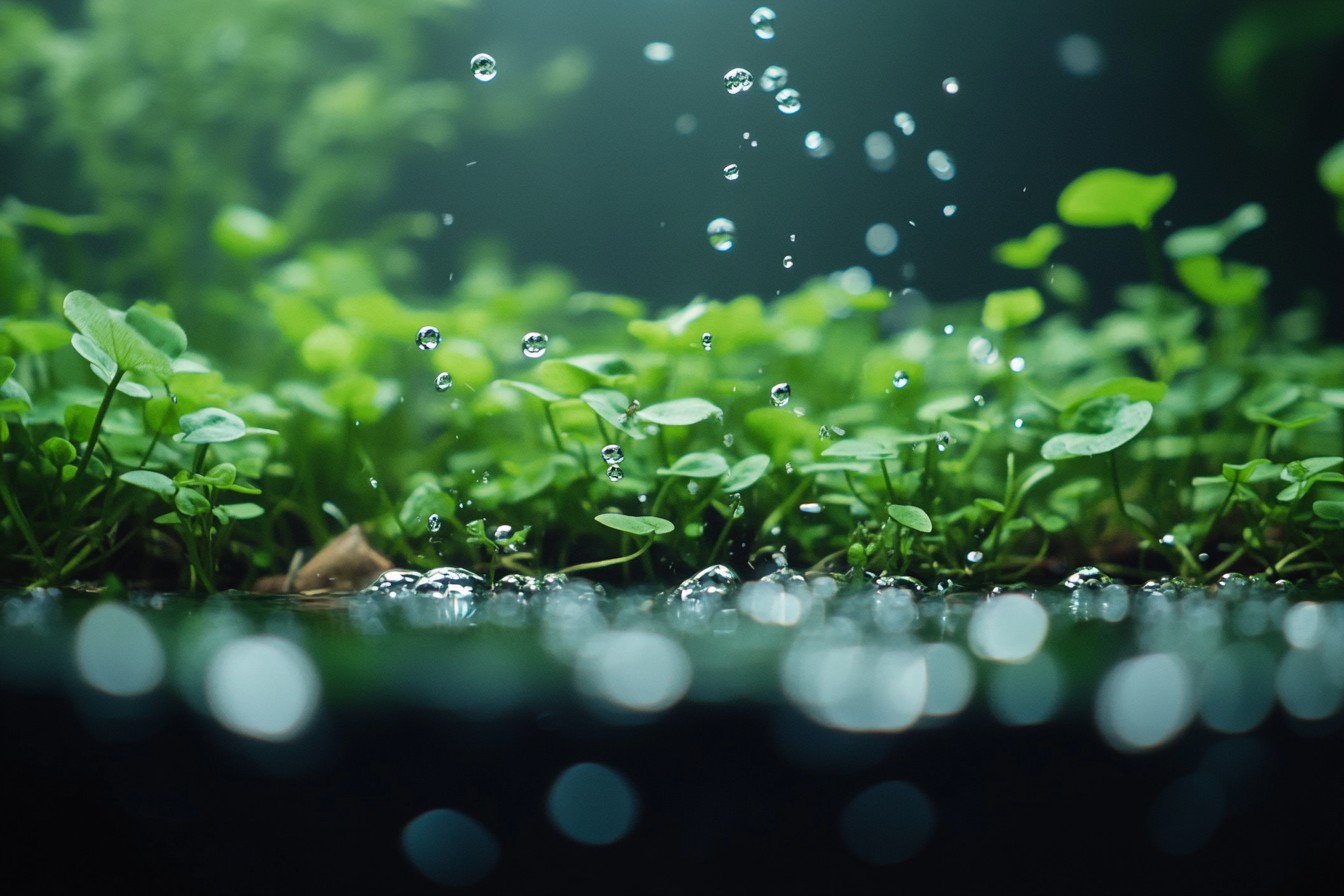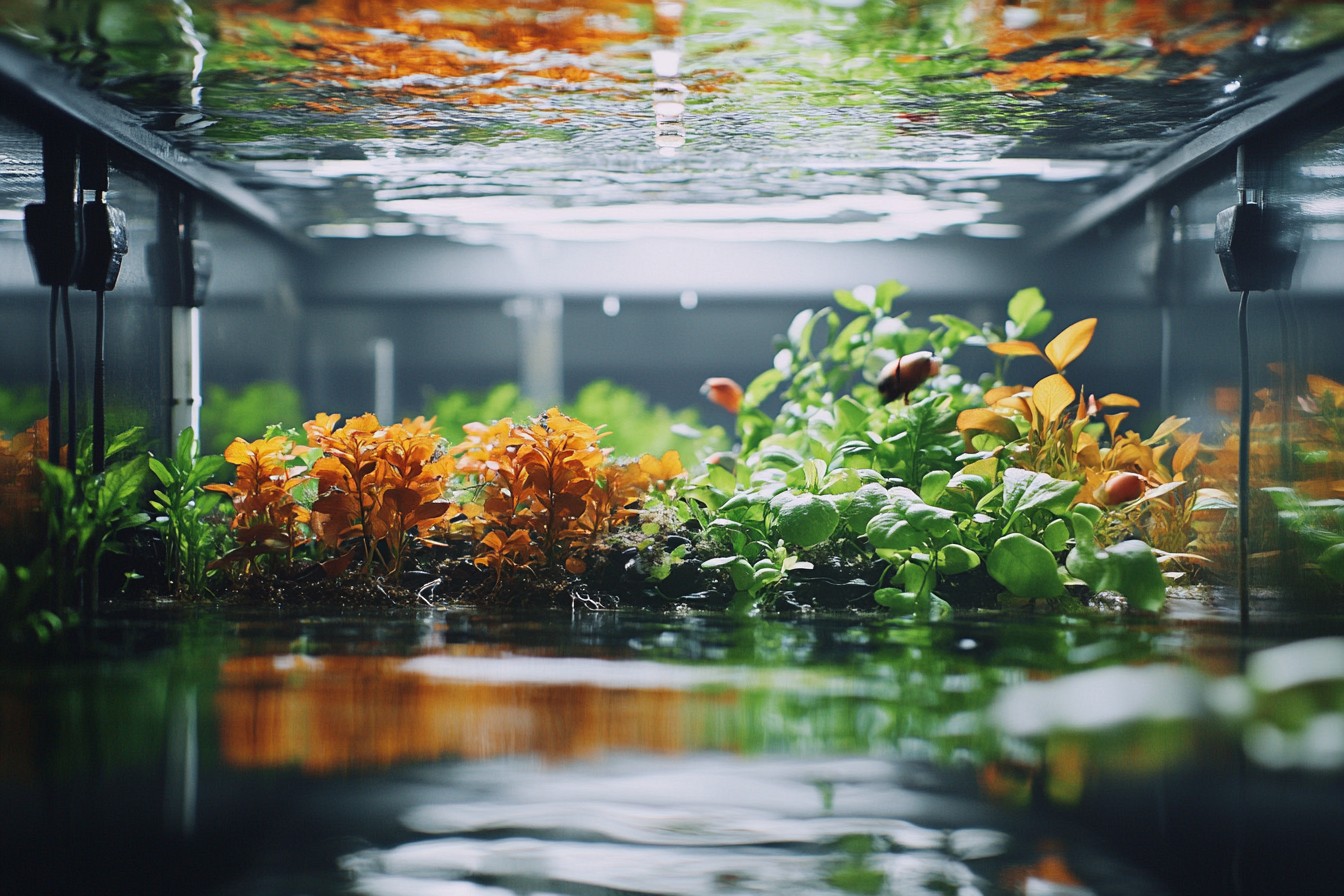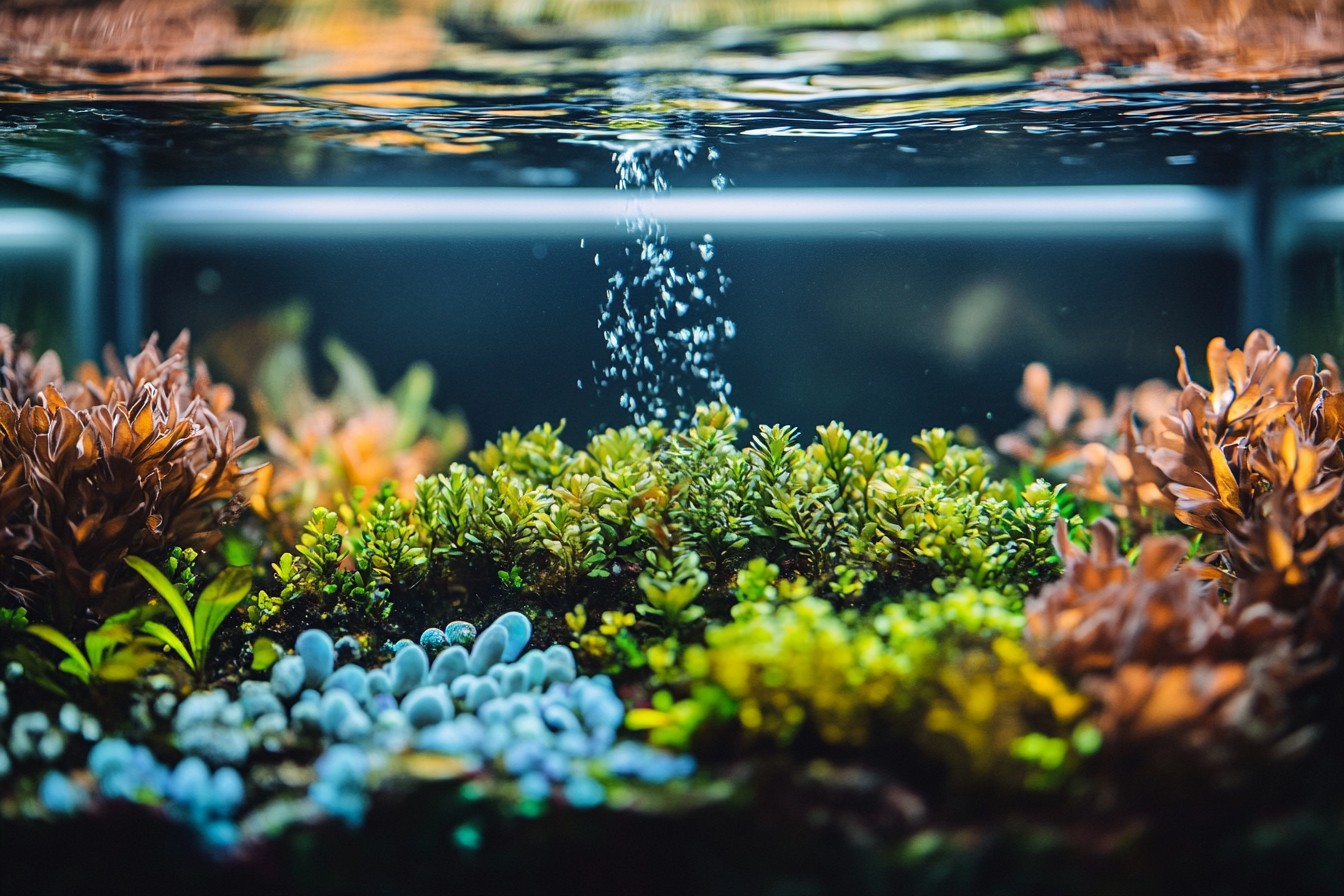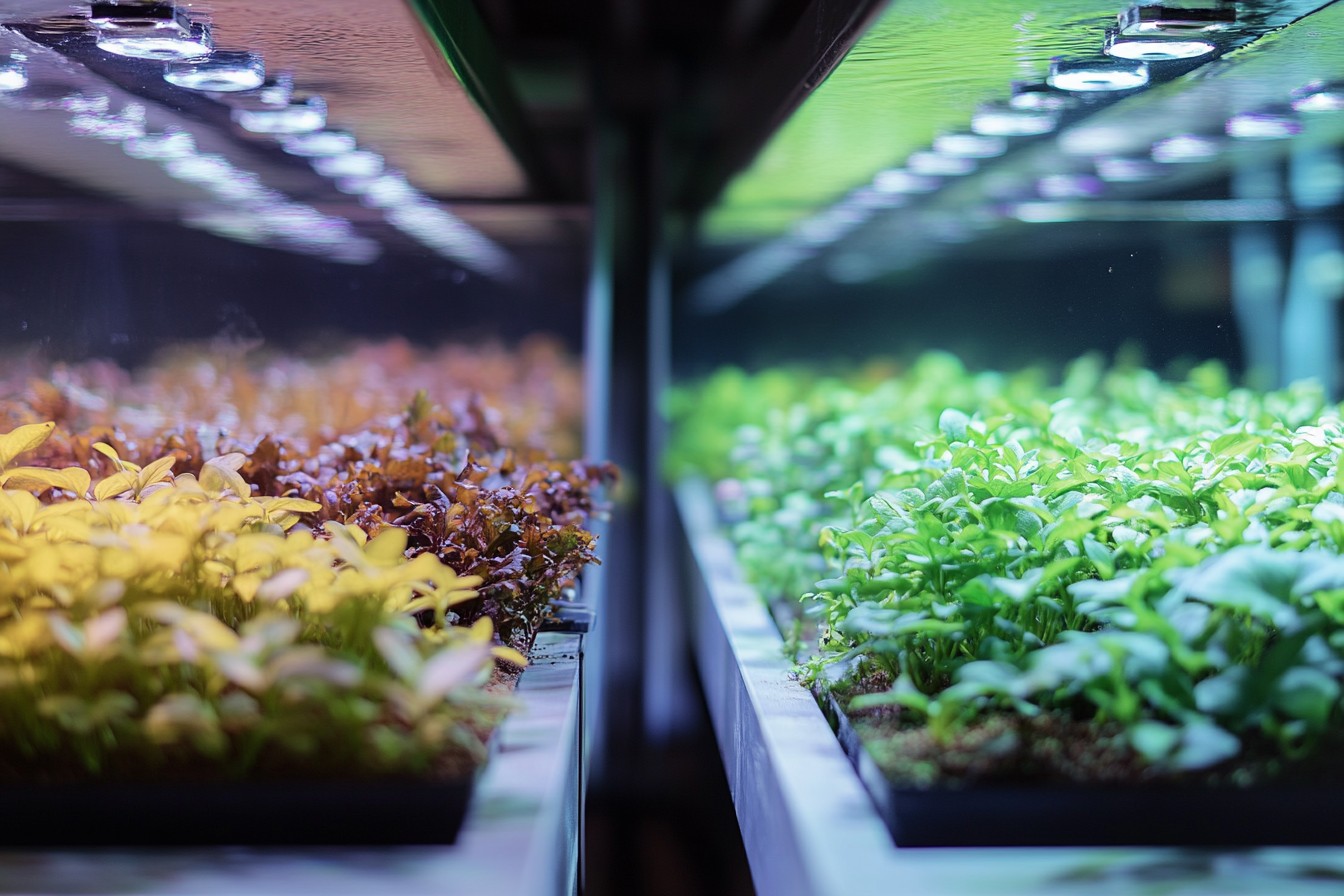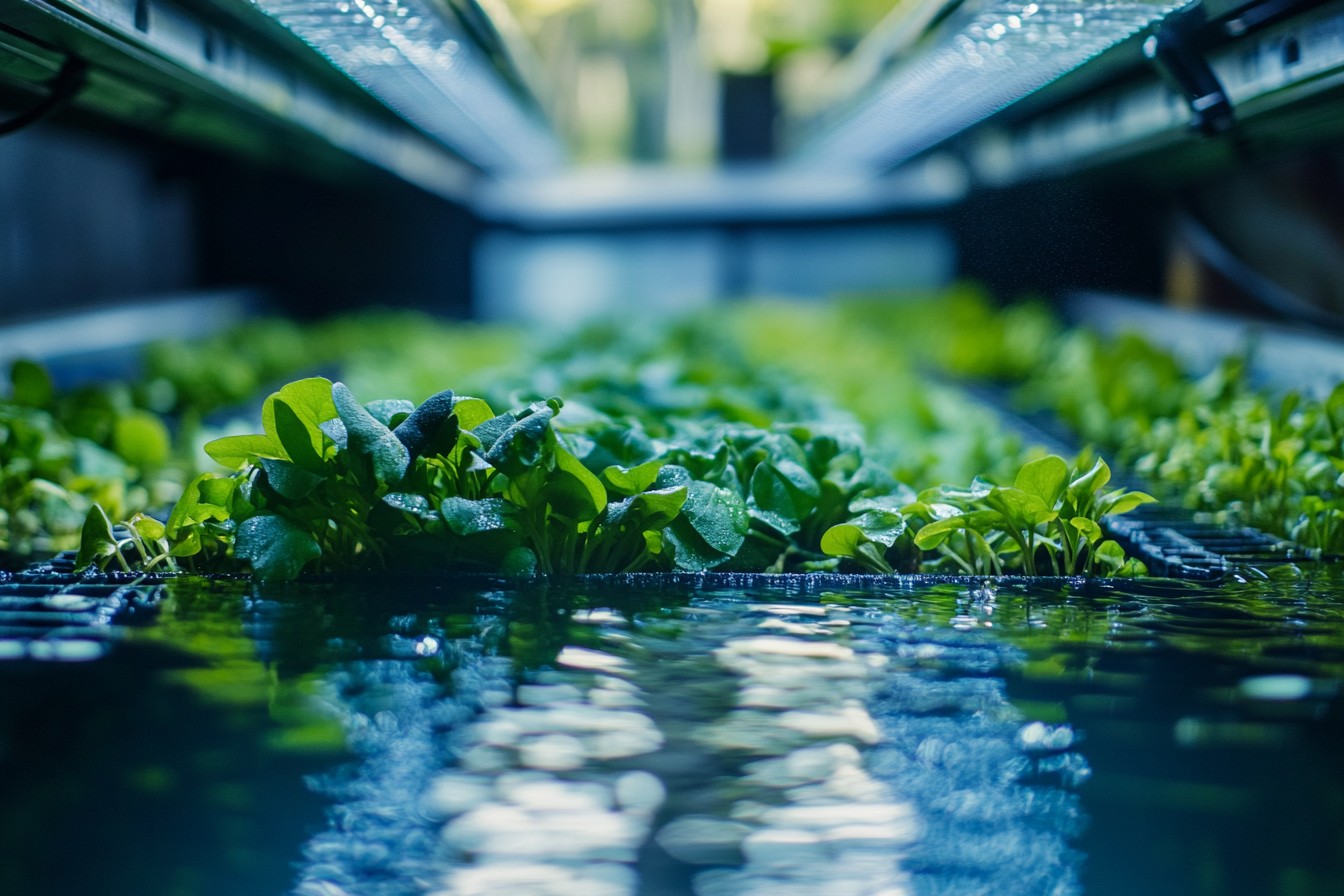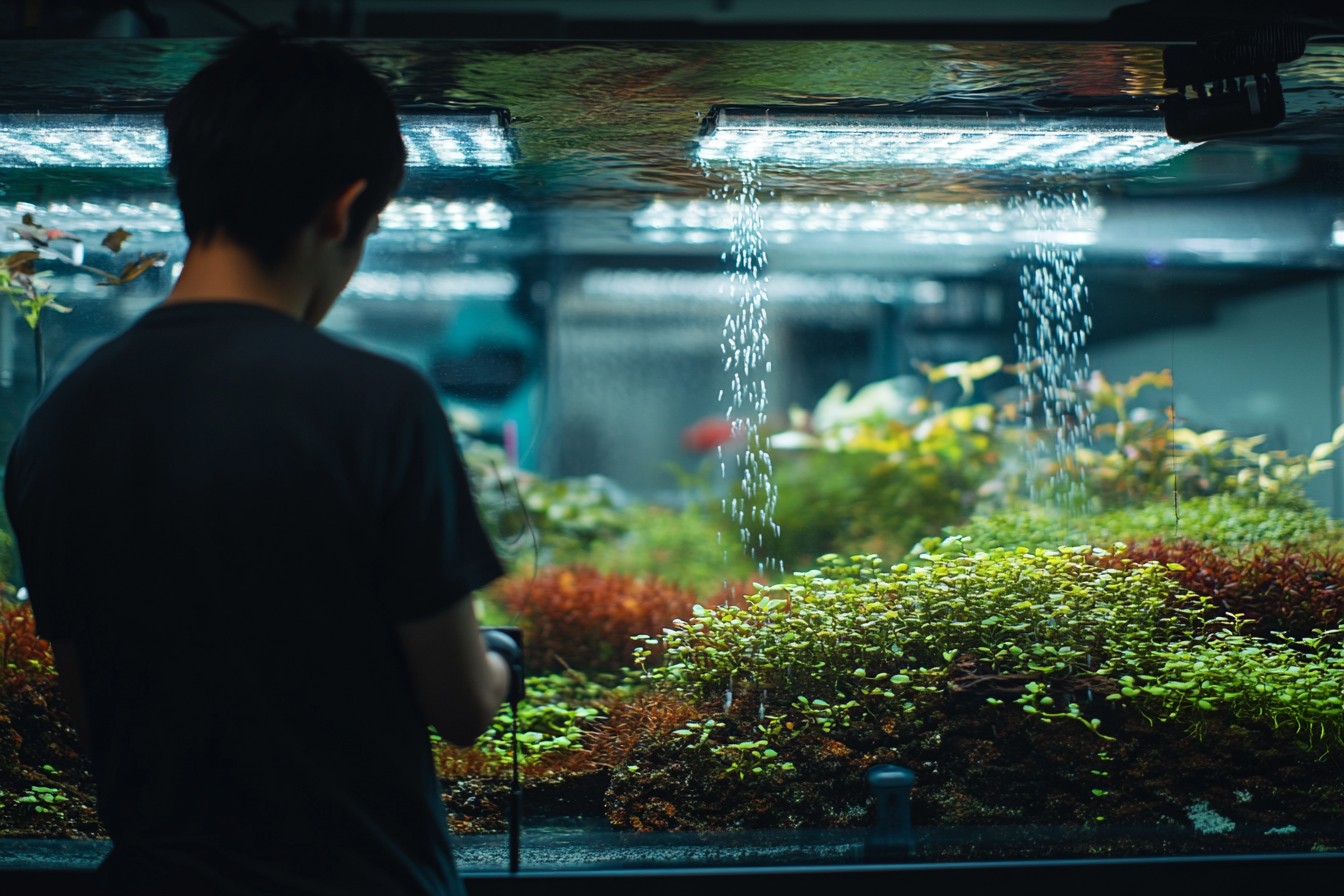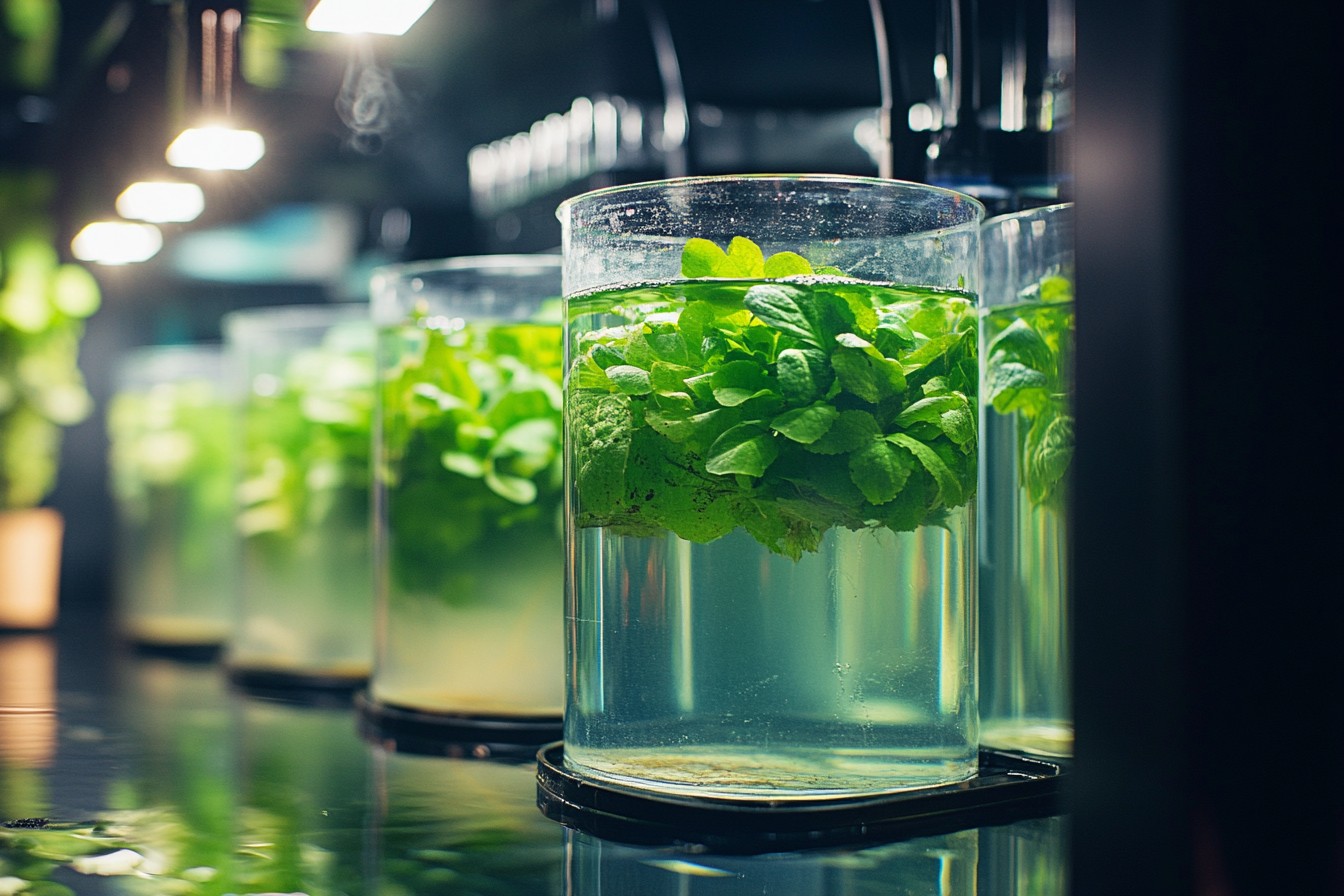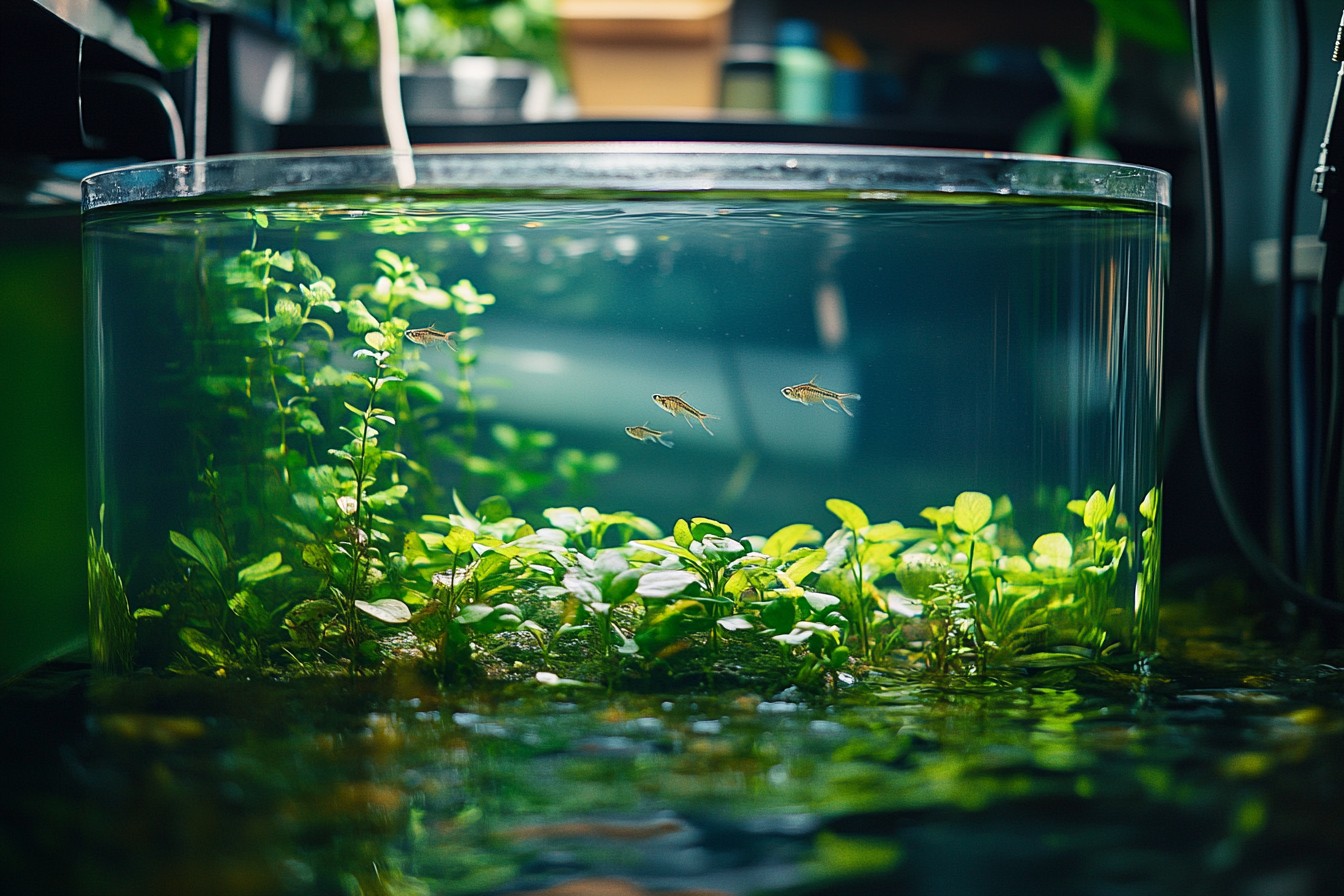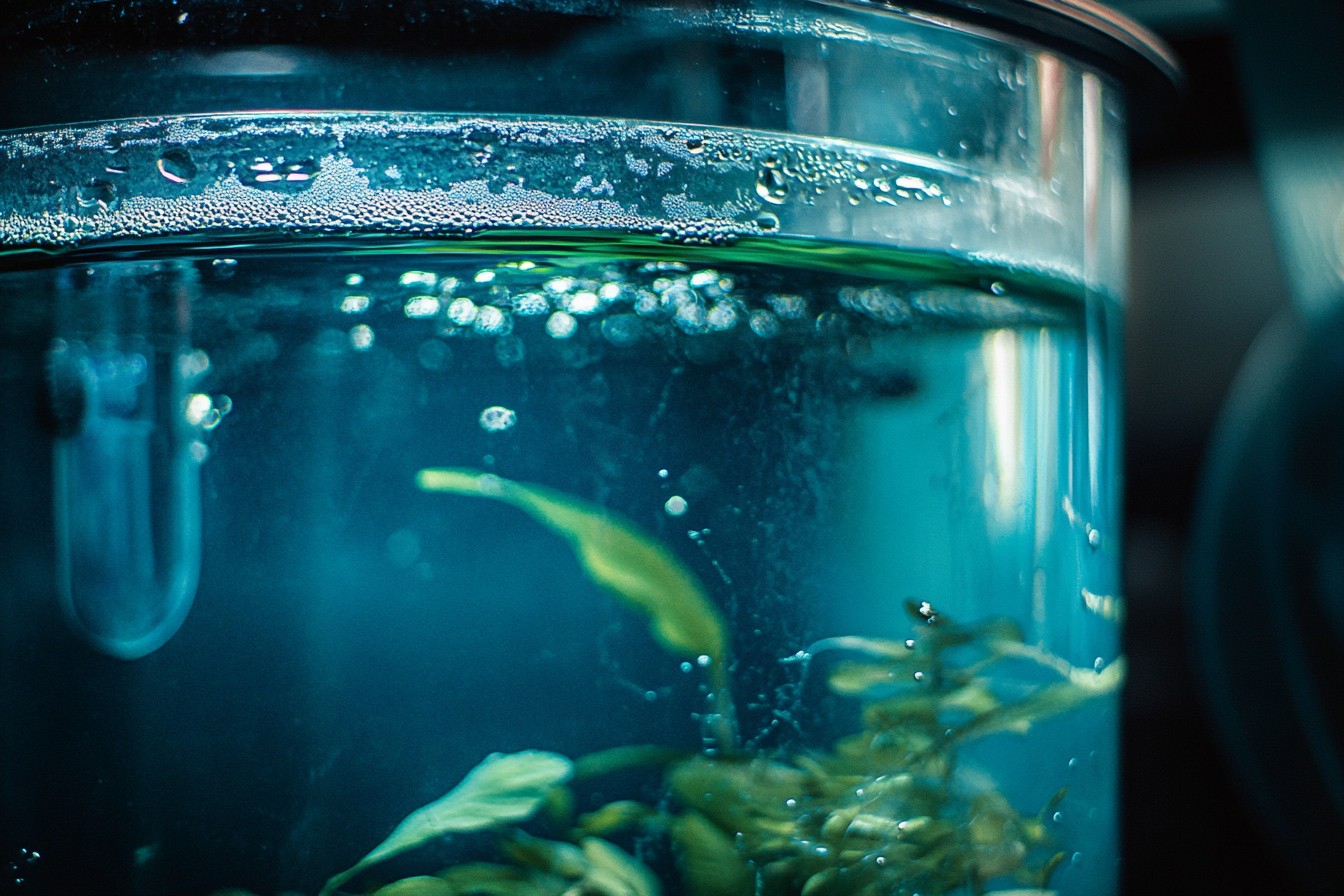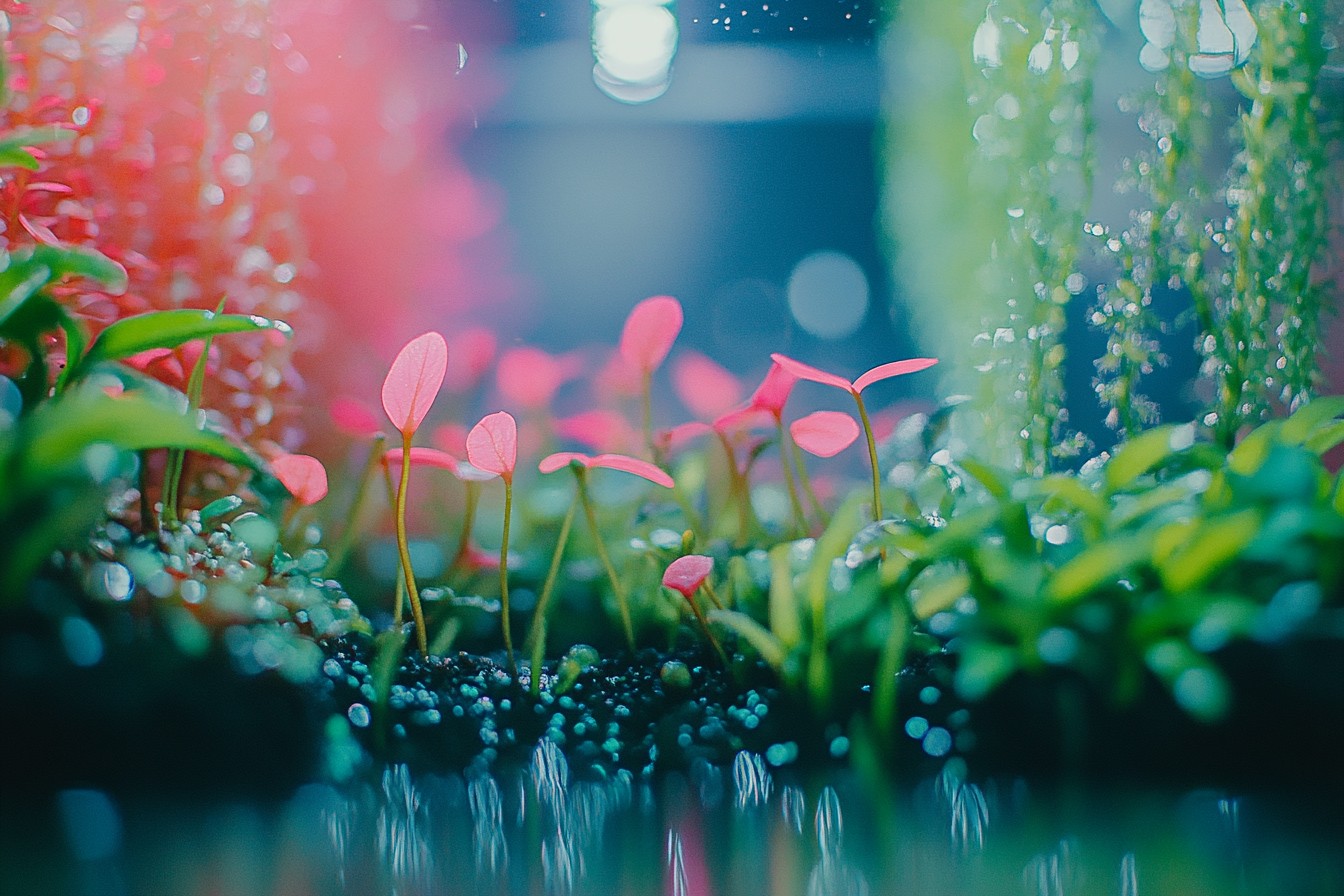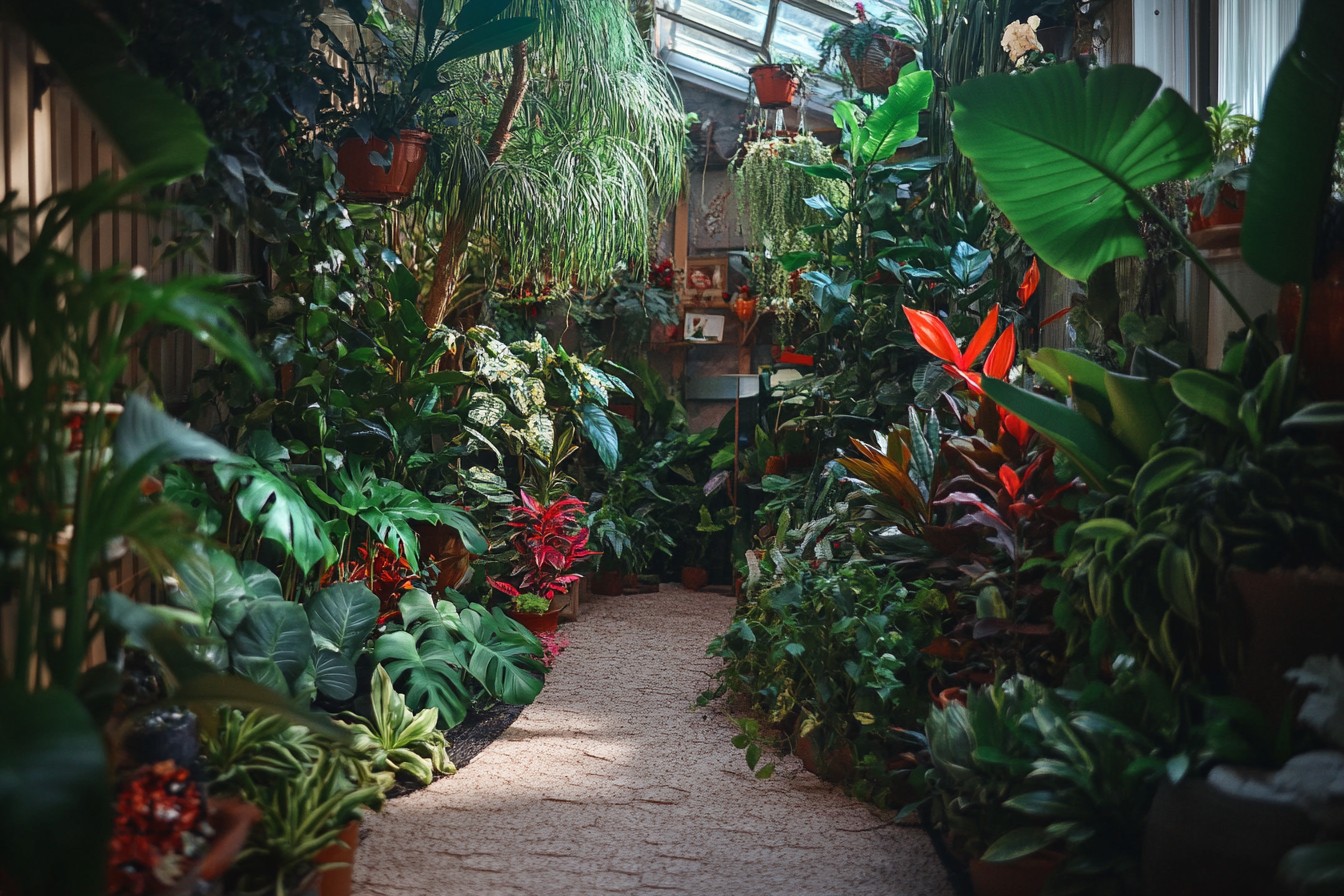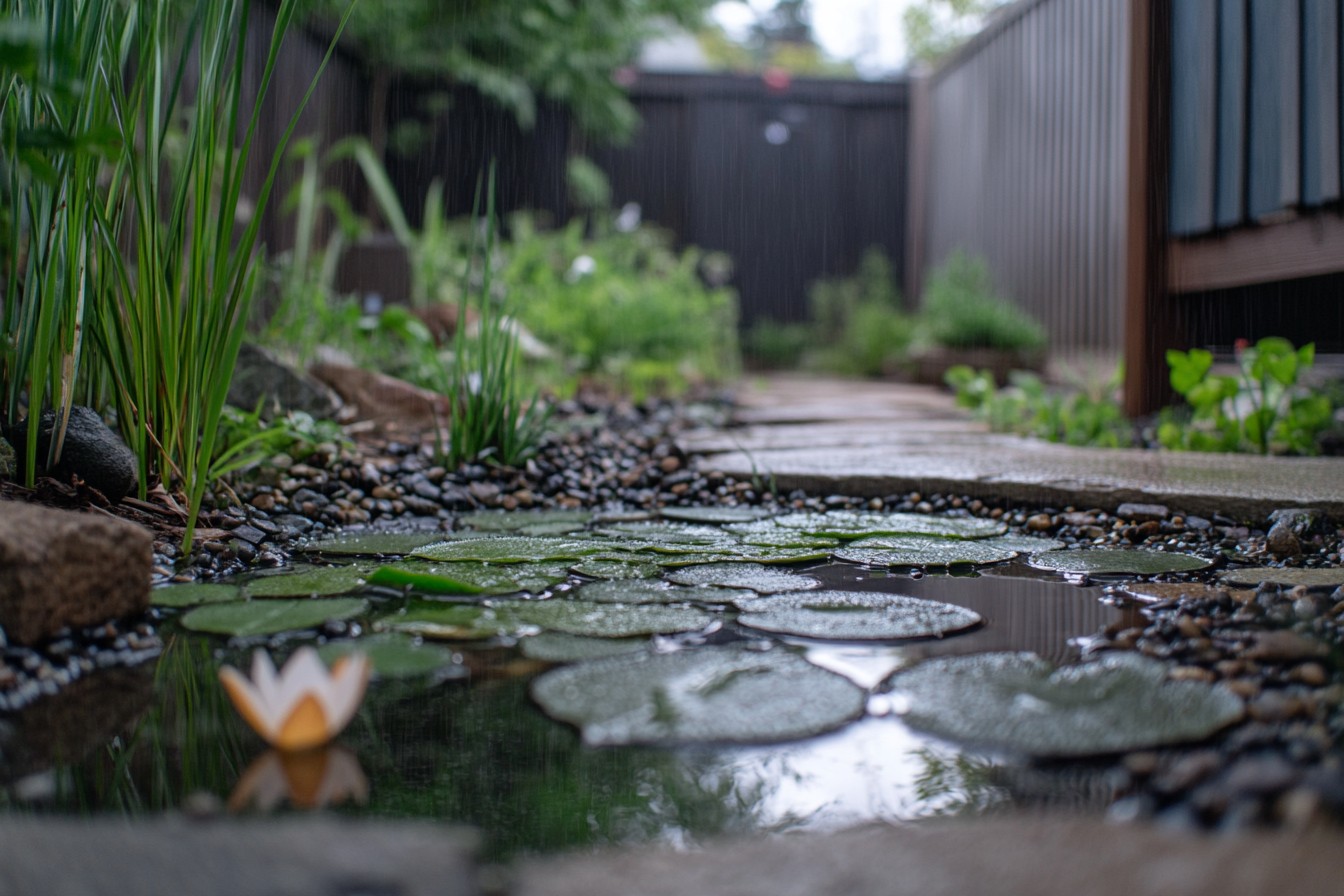When my girlfriend suggested I might have “too many” hydroponic systems in our apartment, I did what any reasonable person would do—I built two more just to run a proper comparison test. In my defense, science requires replication, and I needed to settle once and for all which hydroponic method truly reigned supreme: recirculating (like NFT or Dutch bucket systems) or Deep Water Culture (DWC). This wasn’t just about winning an argument on a hydroponics forum (though that was definitely a bonus).
It was about figuring out which system would give me the best results with the least headache in my limited urban growing space. For the uninitiated, recirculating systems pump nutrient solution through channels or to individual plant sites, allowing it to flow past the roots before returning to a central reservoir. Think of it as a lazy river for your plants.
Deep Water Culture, meanwhile, suspends plant roots directly in an aerated nutrient solution—basically a 24/7 root bath with bubbles. Both have passionate defenders who will absolutely fight you in the comments section of any hydroponics video. My experiment began last January—perfect timing since my seasonal depression always responds well to buying expensive equipment and starting complicated projects.
I set up identical growing environments on opposite sides of my spare room: same lights (Mars Hydro TS1000s), same temperature control (72°F during the day, 65°F at night), same starting nutrients. The only variable was the growing system itself. The DWC setup was straightforward: five-gallon buckets with net pots suspended in the lids, air stones in each bucket connected to a surprisingly loud air pump that quickly earned the nickname “The Possessed Refrigerator” from aforementioned girlfriend.
The recirculating system was a modest NFT (Nutrient Film Technique) setup with a 10-gallon reservoir pumping to four growing channels that drained back into the reservoir. For test subjects, I chose lettuce (Buttercrunch and Romaine), basil, and kale—all leafy greens that typically perform well in hydroponics. Each system got identical seedlings started in rock wool cubes, from the same seed batches, germinated under the same conditions.
I like to think I whispered equal words of encouragement to both groups, though the DWC plants may have received slightly more pep talks simply because I had to walk past them to get to the bathroom. The first difference I noticed came during setup. The DWC system took me about 45 minutes to assemble, not including the time spent drilling holes in bucket lids and hunting for that one air stone that mysteriously disappeared during unpacking (later found in the pocket of a hoodie I hadn’t worn in weeks).
The NFT system, with its channels, fittings, and precisely angled return lines, took nearly three hours and included one minor flood when I discovered that “finger-tight” isn’t actually tight enough for PVC connections under pressure. Both systems up and running, I settled in for what I expected to be weeks of meticulous data collection. Instead, differences appeared almost immediately.
By day three, the DWC seedlings were already showing explosive root growth—delicate white tendrils reaching down into the nutrient solution like they were trying to high-five the air stones. The NFT plants looked… fine.
Not struggling, but not thriving in that almost alarming way the DWC plants were. It was the difference between a plant that’s growing and a plant that’s GROWING, if you catch my drift. The first maintenance hurdle hit on day seven when the smallest tube in my NFT system clogged with what can only be described as “mystery slime”—likely a combination of mineral buildup and biofilm.
Clearing it required disconnecting the line, running a pipe cleaner through it (twice), and reconnecting everything, which naturally led to another small flood. Meanwhile, the DWC buckets sat there bubbling away, demanding nothing but an occasional glance to make sure the air pump was still running. Then came the first nutrient change at the two-week mark.
The DWC system required me to lift out each plant (gently, to avoid damaging the now substantial root systems), empty and clean each bucket individually, refill with fresh solution, check and adjust pH in each bucket, and carefully replace the plants. Total time: about 45 minutes, plus another 10 minutes the next day readjusting pH levels that had drifted overnight. The NFT system, in contrast, just needed the reservoir emptied through the handy drain valve, wiped down, refilled, and pH adjusted—15 minutes, tops.
Points to NFT for maintenance efficiency, though this advantage came with footnotes that would become clear later. By week three, another pattern emerged. The DWC plants were consistently ahead in growth—about 20% larger by both height and leaf span measurements.
The lettuce heads were denser, the kale leaves broader, the basil more vibrant. But the NFT system was far from failing; its plants were healthy and growing steadily, just not with the same barely-contained enthusiasm of their DWC counterparts. This growth difference made sense once I started monitoring dissolved oxygen levels.
The constant bubbling in the DWC buckets maintained oxygen saturation between 7-9 ppm (parts per million), while the NFT system averaged 5-6 ppm. For leafy greens, higher oxygen levels translate directly to faster growth, as the plants can respire more efficiently and uptake nutrients more effectively. The midpoint pH test revealed another interesting pattern.
The DWC buckets were experiencing faster pH drift—rising from my target 5.8 to around 6.5 within 48 hours—requiring more frequent adjustments. The NFT reservoir was more stable, typically shifting only 0.3-0.4 pH points over the same period. This makes sense given the larger water volume of the central reservoir diluting any changes, but it meant more hands-on management for the DWC system.
Week four brought a new challenge when I left for a three-day work trip. This was the first real test of each system’s resilience without daily babysitting. I topped off both systems before leaving, adjusted pH, and hoped for the best.
Returning home, I found the NFT plants continuing their steady-if-unspectacular progress, utterly unfazed by my absence. The DWC plants, however, showed signs of stress—slight wilting and some discoloration at the leaf margins. The reservoir levels had dropped just enough to reduce oxygen transfer from the air stones, creating a brief but impactful oxygen deficit.
This highlighted one of DWC’s key weaknesses: its lower tolerance for neglect. The individual buckets have less water volume than a central reservoir, meaning faster nutrient depletion and less buffering against environmental changes. For someone with an irregular schedule or travel plans, this could be a decisive factor.
The power outage test wasn’t planned (thanks, summer thunderstorm), but it provided valuable data nonetheless. With electricity out for approximately six hours, both systems lost their active components—air stones in the DWC and the circulation pump in the NFT. The NFT plants showed minimal stress afterward, as the roots weren’t submerged and could still access atmospheric oxygen.
The DWC plants, however, spent those hours with their roots in increasingly oxygen-depleted water, resulting in visible stress that took nearly two days to fully recover from. By the six-week mark, harvest time for the lettuce, the final results were clear but nuanced. The DWC lettuce heads were substantially larger—averaging 32% heavier than their NFT counterparts.
The flavor was comparable between systems, with blind taste tests (thank you, skeptical friends bribed with beer) showing no consistent preference. The basil and kale showed similar patterns, with DWC producing greater biomass but no significant difference in flavor intensity or quality. But raw yield doesn’t tell the whole story.
When I calculated resource efficiency, interesting tradeoffs emerged:
Water usage: The NFT system used approximately 20% less water over the full growing cycle, primarily because the DWC system needed more frequent top-offs due to increased evaporation from all those bubbles. Additionally, during nutrient changes, the DWC system required more water to fill multiple buckets rather than a single reservoir. Electricity usage: Here, DWC took a significant hit.
The air pump running 24/7 consumed nearly twice the electricity of the NFT’s water pump, which was less powerful and could potentially be run on a timer (though I didn’t test that configuration in this experiment). Nutrient consumption: Surprisingly similar between systems, with DWC using only about 5% more nutrients overall. I’d expected a bigger difference given the faster growth, but it seems the plants were simply using the nutrients more efficiently rather than requiring more of them.
Maintenance time: The NFT system required less frequent intervention but more complex maintenance when issues arose. The DWC needed more regular attention but simpler maintenance procedures. Over the six-week period, I spent about 4.5 hours maintaining the DWC system versus 2.75 hours for the NFT—a significant difference for someone with limited time.
Space efficiency: The NFT system was clearly superior here, producing about 75% of the DWC yield in roughly 60% of the footprint. The vertical design of channels versus the spread-out bucket arrangement made better use of limited floor space, an important consideration for apartment growers. Scalability also differed dramatically.
Adding a plant to the DWC system meant another entire bucket—more space, another air stone connection, another unit to maintain. The NFT system could accommodate additional plants simply by adding another hole in the existing channels, up to the capacity of the pump and nutrient reservoir. After running this experiment twice more with different plant varieties (adding bok choy and arugula to the mix), I’ve reached some conclusions that will surely offend zealots in both hydroponic camps:
DWC is superior for:
– Maximum growth rate and yield when conditions are optimal
– Simplicity of initial setup
– Resilience against pump failures (the bubbles can stop briefly without immediate disaster)
– Plants with extensive root systems that benefit from unlimited space
– Situations where the noise of an air pump isn’t an issue
NFT excels at:
– Space efficiency in small growing areas
– Water and electricity conservation
– Ease of maintenance and nutrient changes
– Consistency during brief periods of neglect
– Scalability without proportional increases in footprint
– Setups where system noise is a concern
For my specific situation—an urban apartment with limited space, occasional travel, and a girlfriend with increasingly pointed questions about the utility bill—the NFT system emerged as the better overall choice despite the lower absolute yield.
I’ve since expanded to a two-tier NFT system that produces about 90% of what my DWC setup yielded in the same footprint, with half the maintenance time and a much more reasonable electricity consumption. However, I haven’t abandoned DWC entirely. It’s become my dedicated system for fast-growing, high-value herbs and leafy greens with short cultivation cycles, where its aggressive growth rate creates a meaningful advantage.
The NFT system handles everything else—longer-term crops, experimental varieties, and anything I might neglect during busy weeks. The perfect system, as it turns out, isn’t about maximizing any single metric. It’s about finding the right balance of yield, resource efficiency, maintenance requirements, and fit for your specific circumstances.
And sometimes, it’s about having multiple systems despite your girlfriend’s entirely reasonable objections, because that’s what plant obsession looks like in a one-bedroom apartment with limited windowsill space. If you’re just starting out, I’d recommend DWC for its simplicity and forgiving nature—mistakes are isolated to individual buckets rather than affecting the entire system. If you’re dealing with space constraints or want something that can grow with you (literally), NFT offers better long-term flexibility.
And if you’re like me, you’ll eventually end up with both, carefully optimized for different crops and constantly tinkered with despite being supposedly “finished” months ago. Just maybe don’t tell your significant other that you need “just one more system” for proper experimental validation. That argument has diminishing returns, I’ve discovered.
Unlike my lettuce, which just keeps on growing.

